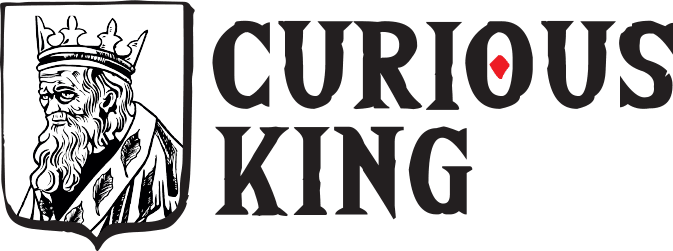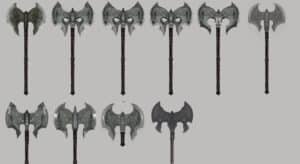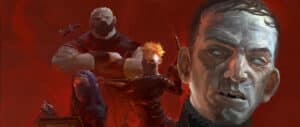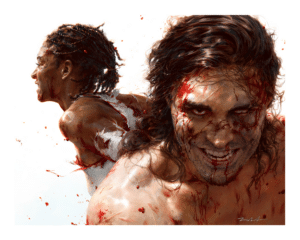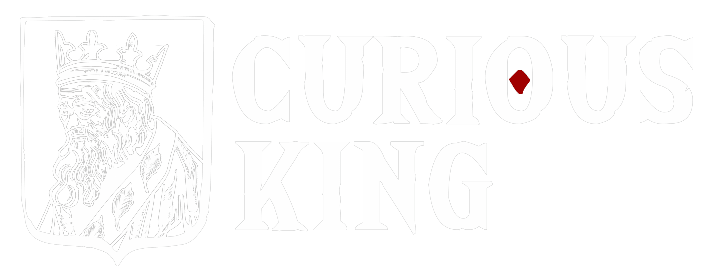Since I posted my custom version of Gardens of the Moon by Steven Erikson, I have had several people get in contact asking for a guide/blog on how I did it. As I thoroughly enjoyed the process and realised there is no real material on the internet for this sort of thing, I thought I would oblige.
This was done as a personal project, so hasn’t been for sale and never will be.
This is going to be a long read, so buckle up. I may split it down into much easier to digest steps at a later date as a handy guide, but this is my journey so you’re going to have to live it with me.
I am a huge Steven Erikson fan. HUGE. I have always been a bit of a reader but I started reading regularly again around the time Game of Thrones first series came out (2011). Once I realised it was a book series, I bought the 4 that were out and read them in a couple of months.
A friend of mine happened to see me reading this series and suggested I read the Malazan Book of the Fallen. Now it took me a couple of goes on the first book before I finally got into the flow, but when I did, I DID. Over the next year or two I read the lot, and fell in love with it. It quickly became my favourite series, and I genuinely believe it’s the best fantasy series ever written (I will die on this hill, trust me).
As a bit of a collector I decided to get a nice set of the books for home, and after doing some research I started collecting the Bantam Hardbacks (of which there isn’t a complete collection…). Around this time I discovered Subterranean Press and their versions, at this point they had done book 8 and Dust of Dreams was next on the list. Needless to say I was blown away by them – the art they commissioned, the quality of the books looked incredible and I signed up as soon as book 9 went on sale.
I looked online for the earlier books and started to realise just how sought after they were, especially the first two books (they were going for silly money, and still are). Unfortunately this kiboshed my dream of owning the set of numbered copies, and definitely put the lettered versions way beyond reach.
During a discussion the malazan reddit and being unable to attain the Sub Press versions, a random redditor made a suggestion. “I’m just going to rebind the original books and commission my own art, it’ll end up being cheaper”. What a suggestion, that’s a brilliant idea, why didn’t I think of that?! I weighed up the idea in my head, and decided to go for it, and that became the start of a very long process.
So, how do you make a custom bound version of your own book? I scoured the internet but wasn’t very impressed and couldn’t find anything specific to this kind of project, so I decided to ask the internet, Reddit. I found a couple of subreddit’s r/selfpublishing and r/books and started to ask how one would go about this.
Luckily there are some good eggs on the internet and I got the basics I would need sorted. I needed to find a printer, and I needed to find a good bookbinder – some do both, but not all.
Layout
Once I had typed out the text, I needed to edit it – I tried a few programs the internet suggested I use. Scriviner, Word etc, but one program seemed to stand out; Adobe InDesign. I’ve a bit of photoshop experience from back in the day so started to teach myself how to use it.
I picked it up quite quickly (thankfully) and it’s not that difficult if you’re not doing anything too advanced on it. I would strongly suggest anyone picking it up spend time on paragraph types as it makes formatting much quicker.
To come up with the chapter layout’s I came up with about 8/9 different ones in photoshop and asked friends (and the internet of course) which they liked best. Once settled on one, I started to recreate in InDesign, which is quite easy as you’re only moving fonts about. The original 6 are below.

I then broke the PDF down into chapters, and started copy and pasting the text into a chapter file on InDesign. It’s worth noting you need to set your pages up first – so make sure you get the size/margins right at the beginning, or you’ll end up going back over it multiple times (like me). I’d also advise starting a master file to tie them all together.
The issue with the chapter breakdown is that they were formatted with line breaks, and when I put the text in at the size/font I wanted it was way too slim on the page. This meant I ended up going through the whole text line by line, removing the line breaks (I ended up going through the book 3 times line by line…) and having a malleable text block within the program.
When I was fairly happy with this, I started work on some of the other pages that needed new layouts, Dramatis Personae, Glossary, Title Page, Acknowledgements etc. I wanted it to be exactly the same as the original (aside from the publisher page, sorry!) and actually added in a page with a few words from me about how it’s not for sale and how great the series is. These were all done in InDesign and I followed similar themes from the other pages I had done.
Art
One of the big things about this project was the art. To find my artists I knew I wouldn’t be able to afford Marc Simonetti or Michael Kormack but I had seen some very good fan art on the likes on pinterest etc. Believing a fan artist to be more reasonably priced, but also more well-versed with the books I decided to seek out some good ones.
First port of call was DeviantArt (platform for amateur and professional artists) and started to search through Malazan tags to find work I particularly liked. I found about 5 or 6 artists who had done incredible work and made approaches to them on DeviantArt for some commissions. Several got back to me and had moved on from Malazan art, but a few came back to me with interest.
Through my conversations with some of the artists I realised that one particular one; Shane Cook (Slaine69) had sketched out nearly every character in the first book, and the likenesses (to my mind) were incredible. I started to hatch an idea that maybe I should have some sketches commissioned in B&W for the book, to be peppered in at random places. Shane loved the idea and after my initial request of 8 pictures, he came back with 21 sketches (!!!).
The cover and insert artist Zoe Badini didn’t acutally come through DeviantArt but good old trusty Reddit. She had posted an incredible picture she had done from a scene from Deadhouse Gates (book 2) and I was really impressed with the style and character likenesses. I made an approach and she was really up for it and so we discussed ideas for the cover.
Originally my plan was to have reformatted layouts and a one-off commissioned dust jacket for the book. I ended up getting considerably more art done. As with most things I do, I realised this was definitely not enough – If I wanted my own lettered version of the book I was going to need more than a dust jacket. So I ended up commissioning 7 pictures in total (6 insert art, 1 cover) all in colour. The process was really smooth. I’d suggest some scenes/set ups and she would go away and do some basic sketches and I’d pick from there and explore a scene further until we were happy with it.
Aside from malazan art, I went on fiverr and found a couple of people to do a few bits for me. One person redid the Darujhistan map at the start of the book, and another lady did a few B&W images for each “book” beginning (GotM is split in to 7 books).

Printing
Once I had added in all of the sketches to the book and fine tuned the layout I needed a printer. I consulted google and made approaches to several printers who said they did “small runs”. Small run is what you want as most printers have minimum orders of 100+ books. I also recommend using a smaller business rather than an upload and print online job – the main reason was that I had no experience doing this and I could ask the relevant questions.
I had read up on printing and it appeared that most high end books are either letterpress printed or offset litho printed. I couldn’t go for either as the set up costs for these are astronomical and only become worthwhile when doing a considerable run, definitely not for one off prints. So I had to go with digital printing for this, which isn’t quite as high quality but the printer did a great job.
I found a printer who would do as few as 3 copies (as long as I paid them the minimum printing fee) and then had them printed softcover as I fully intended to have them bound. Unsurprisingly when I got the first batch back I had noticed a few mistakes in the formatting (you only notice when you have in hand sometimes) so I had them printed a second time, but realised quickly after I wanted the colour images contained, so ended up printing them a third time…
The printer did a stellar job of tipping in the colour images. FYI when having colour images/sections in books, these are “tipped in” by the printer/binder. It means they are not part of the sewn book but glued inside –a very delicate process that not every printer does.
I also requested that I receive the books as a sewn book block, to make it easier for the binder to work on. This meant they arrived with no cover, but that’s fine as I was sending them to a binder for a leatherbound job.

Binding
Before I had my book blocks in hand I had done some research on binders in the UK. Again I was looking for a business that could handle small jobs (some binders also have minimum order quantities) and I really wanted a binder with a high quality finish.
Since I started collecting books I could tell the difference in quality when it comes to binding, and usually that’s down to price. I found a few places, sent over a brief of what I was roughly looking for and gathered a few quotes – I then asked for some pictures of their work.
The binder I went with was significantly more expensive than on or two of the other quotes, but the work they had completed was absolutely stunning and they seemed to be the real deal. I really didn’t want my book to come out average after all the time and effort I spent on it, so went with the binder in question and was not disappointed.
When putting together a brief for a binder I had to think about quite a lot of things, what type of case, case interior, book endpapers, binding type, materials etc. I’d had a vision in my head of what I wanted and gave the basics for the quote then had to come up with the design.
When submitting your design you need to make sure it’s to scale (the binder should be able to give you exact dimensions) and runs at 300DPI – this means your sloppy MSPaint or Photoshop won’t cut it. So I taught myself Adobe Illustrator. Luckily my wife and good pal are pretty much experts so I picked it up reasonably quickly. Illustrator allows you vector images (effectively makes them pixel perfect and malleable to any scale), so I went about porting my photoshop cover/case designs to illustrator.
To come up with the layout design I scrolled through Yegor Malinovskii’s instagram (is there a better book photographer out there? I doubt it) and took in the designs of some of the best productions around by the likes of Suntup, SubPress, Centipede Press, Zagava etc and put together my own. I went fairly simple/elegant for this one as it’s my first production and didn’t want to get too creative on my first attempt (I don’t do creative work for a living), but was very pleased with the outcome.
I went back and forth with the binder to get the designs right for them (they like each colour of foil stamping to be on a separate layer), and they very fortuitously had some red and black marbled papers knocking around (as you do), and we ended putting them in the traycase.
The binding was surprisingly quick, I had them back within a week and the quality (as you can see) is just incredible. I had high expectations and they exceeded them on every level – you pay for quality, and DAMN what quality.

So that’s my journey from idea to completed project. The whole thing took me just over 10 months – there were weeks/months when I did little to nothing, and others where I spent a couple of hours a night working on it.
Overall a very satisfying project, and I think I achieved my goal of putting together a high quality production. To put the icing on the cake, I offered the second set to Steven Erikson himself and he enthusiastically accepted – goal achieved.
I have decided on my next project already, and this one will be available to buy! But that’s for another time.










